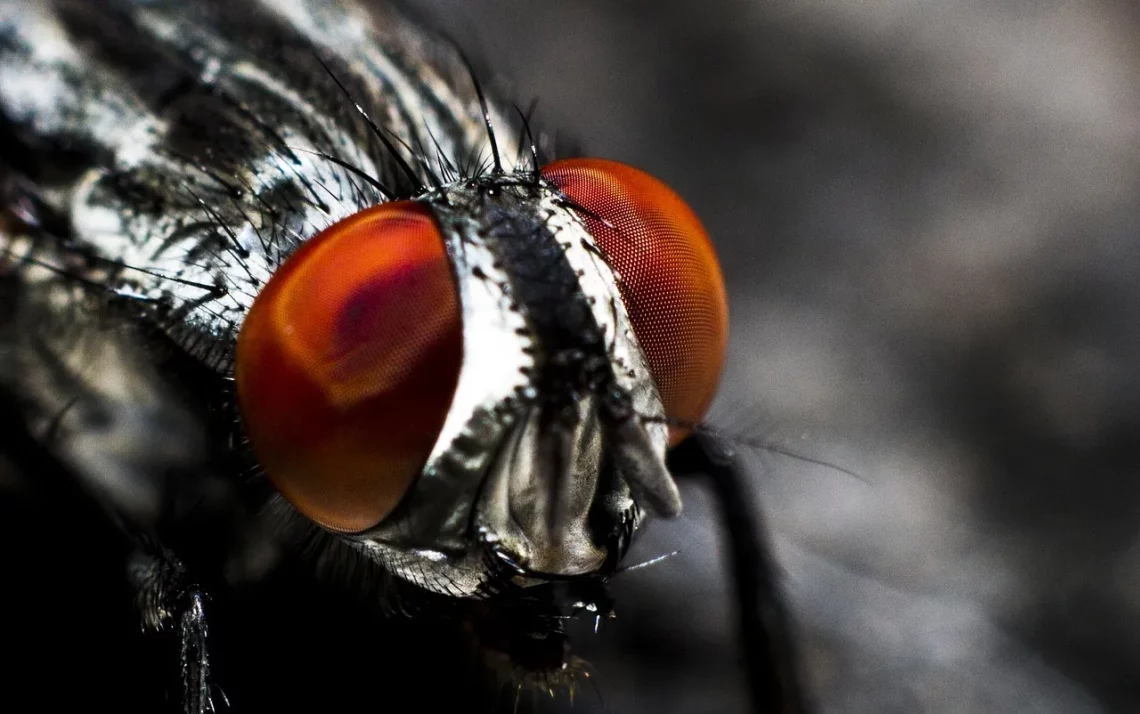
Identifying and Dealing with Small Brown Bugs in Your Bathroom
In the often humid environment of a bathroom, small brown bugs can become an unwelcome presence. These tiny insects can send shivers down your spine, especially when you spot them scurrying across your sink or shower. While they may seem harmless at first glance, their presence can indicate underlying issues that need to be addressed. Understanding these pests is crucial to maintaining a clean and healthy home environment.
The bathroom is a prime location for bugs due to its moisture and warmth, making it an ideal breeding ground. Homeowners often find themselves puzzled by these tiny intruders, unsure of where they come from or how to eliminate them. Recognizing the type of bug you’re dealing with is the first step in effectively managing the situation.
In this article, we will explore the various types of small brown bugs commonly found in bathrooms, their potential impact on your home, and practical solutions for dealing with them. Understanding their habits and habitats will help you take proactive measures to prevent infestations, ensuring your bathroom remains a sanitary space for you and your family.
Common Types of Small Brown Bugs in Bathrooms
When it comes to identifying small brown bugs in your bathroom, it’s essential to know the common culprits. Several species can inhabit your bathroom space, each with its own characteristics and behaviors.
First on the list are the common cockroaches. These resilient pests are often brown and can range in size, but they are typically around 1 to 2 inches long. Cockroaches thrive in warm, damp environments, making bathrooms an ideal habitat. They are nocturnal creatures, often hiding during the day and emerging at night in search of food and water. If you notice a cockroach, it’s crucial to act quickly, as they can reproduce rapidly.
Another common bathroom intruder is the drain fly, also known as a moth fly. These tiny, fuzzy insects are usually 1/16 to 1/4 inch long and have a distinctive appearance with their fuzzy wings. Drain flies breed in damp areas, particularly in drains and sewage systems. If you notice a cloud of these flies hovering near your sink or shower, it means there’s stagnant water or organic material in your drains that needs to be addressed.
Then there are the carpet beetles, which may also find their way into your bathroom. These pests are small, usually around 1/8 inch long, and have a rounded shape with a mottled appearance. Carpet beetles are attracted to organic materials, including hair, dust, and even fabric. They can cause damage to carpets, upholstery, and clothing. If your bathroom has rugs or fabrics, it’s essential to check for signs of these pests.
Lastly, the spider beetle is another small brown bug that may appear in your bathroom. These beetles are typically oval-shaped and can be mistaken for other insects. They are attracted to decaying organic matter and can often be found in stored food or pantry items. While they do not pose a significant threat, their presence can indicate other issues, such as mold or dampness.
To effectively deal with these pests, proper identification is key. Take note of their size, shape, and behavior. Once you know what you’re up against, you can implement the most effective control measures.
Identifying the Source of Infestation
To successfully eliminate small brown bugs from your bathroom, it’s crucial to identify the source of the infestation. Pests often enter homes through various means, and understanding their entry points can help you take preventive measures.
One common entry point for bugs is through cracks and crevices around windows, doors, and plumbing fixtures. Inspect these areas for any gaps that may allow insects to enter. Sealing these openings with caulk or weatherstripping can significantly reduce the chances of bugs getting inside.
Another critical factor is moisture. Bathrooms are prone to high humidity levels, which can attract various insects. Regularly check for leaks in pipes and fixtures, as even minor leaks can create a perfect breeding ground for pests. Use a dehumidifier if necessary to keep humidity levels in check, and ensure proper ventilation in your bathroom to allow moisture to escape.
Additionally, food sources can attract pests. Avoid leaving open containers of food or pet food in the bathroom, as this can lure insects. Even small crumbs or spills can provide enough sustenance for bugs. Regular cleaning and vacuuming can help eliminate any potential food sources.
Pay attention to your bathroom’s drains as well. Stagnant water and organic material buildup in drains can attract drain flies and other pests. Regularly clean your drains by using a mixture of baking soda and vinegar or a commercial drain cleaner to remove any debris.
Finally, inspect any plants you may have in your bathroom. Indoor plants can harbor pests like spider mites or fungus gnats. Ensure your plants are healthy, and check the soil for any signs of infestation. If necessary, treat the plants with insecticidal soap or neem oil.
By addressing these factors, you can significantly reduce the likelihood of small brown bugs making your bathroom their home.
Effective Methods for Elimination
Once you’ve identified the type of small brown bug and the source of the infestation, it’s time to implement effective elimination methods. Depending on the type of bug, various strategies can be employed to remove them from your bathroom.
For cockroaches, one of the most effective methods is to use bait traps. These traps attract cockroaches with a food source and contain a slow-acting insecticide that the cockroaches will carry back to their nests, effectively eliminating the population. Additionally, regular cleaning is essential. Vacuuming and wiping down surfaces can help remove any food particles or eggs that may attract these pests.
If you are dealing with drain flies, the best approach is to eliminate the breeding source in your drains. Clean your drains thoroughly, removing any organic matter that may be present. You can use a mixture of baking soda and vinegar followed by boiling water to flush out any debris. In severe cases, you may need to use a commercial drain cleaner to ensure all organic material is removed.
For carpet beetles, the most effective method is to wash any affected fabrics in hot water. Vacuuming carpets, upholstery, and baseboards can also help remove any eggs or larvae. If you find a significant infestation, consider using an insecticide specifically designed for beetles, but be sure to follow the manufacturer’s instructions carefully.
Spider beetles can be controlled by maintaining cleanliness and eliminating food sources. Regular vacuuming and proper storage of food items can help keep these pests at bay. If necessary, you can use sticky traps to catch spider beetles as they move about.
Another effective method for all types of pests is the use of essential oils. Many essential oils, such as peppermint, tea tree, and lavender, have insect-repellent properties. Dilute these oils in water and spray them in areas where bugs are commonly found. This not only helps to deter pests but also leaves your bathroom smelling fresh.
By employing these methods, you can effectively eliminate small brown bugs from your bathroom and prevent future infestations.
Preventative Measures to Keep Your Bathroom Bug-Free
Prevention is always better than cure, especially when it comes to pests. Taking proactive steps can significantly reduce the chances of small brown bugs invading your bathroom.
First and foremost, maintain cleanliness. Regularly clean your bathroom, focusing on areas that tend to accumulate moisture, such as sinks, tubs, and shower stalls. Wipe down surfaces and ensure that there are no standing water or damp towels left lying around.
Ensure proper ventilation in your bathroom. Use exhaust fans during and after showers to help reduce humidity levels. If your bathroom lacks natural ventilation, consider installing a fan or opening windows whenever possible.
Seal any cracks or crevices in your bathroom. Inspect areas around pipes, windows, and doors, and seal any gaps that may allow bugs to enter. Regular maintenance of your home’s exterior can also help keep pests out.
If you have houseplants in your bathroom, monitor them closely for signs of pests. Regularly check the soil for moisture levels, as overly damp soil can attract gnats and other insects. Allowing the top layer of soil to dry out between waterings can help prevent infestations.
Finally, consider using natural repellents as a preventive measure. Placing bay leaves, cucumber slices, or essential oil-infused cotton balls in your bathroom can deter bugs without the use of harsh chemicals.
By implementing these preventative measures, you can create an environment that is less inviting to small brown bugs, ensuring your bathroom remains a clean and comfortable space.
In conclusion, while small brown bugs in your bathroom can be a nuisance, understanding their habits and implementing effective control measures can keep your space pest-free. Regular maintenance, cleanliness, and proactive prevention are key to ensuring a healthy home environment. Should you encounter persistent infestations or health concerns, consulting a pest control professional may be necessary to address the issue effectively.
**Disclaimer:** This article is not intended to provide medical advice. For any health-related concerns, please consult a qualified healthcare professional.




